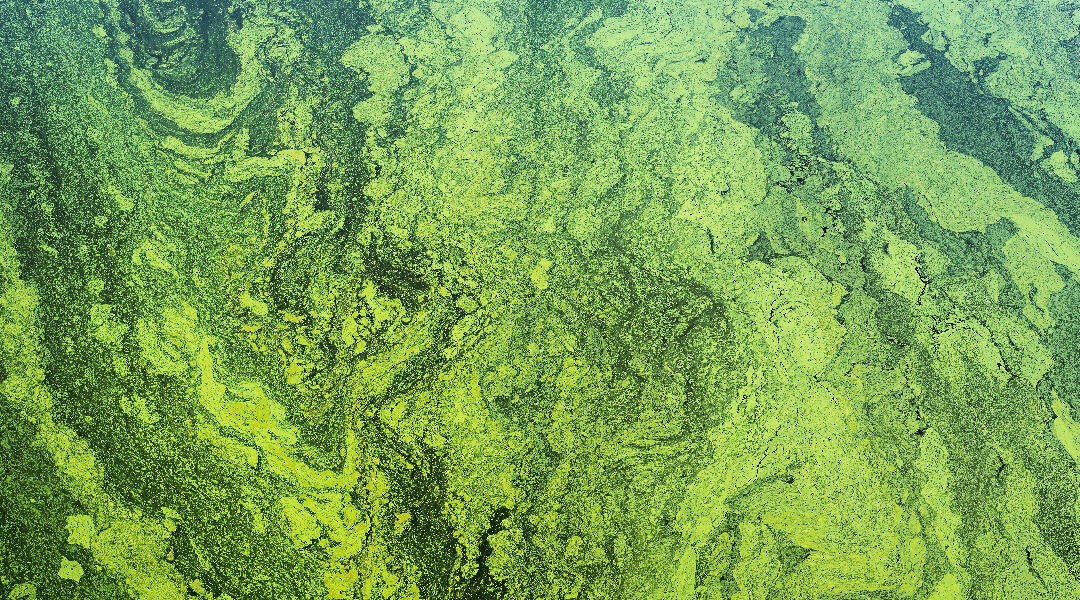Is Your Lake Down in the Muck?
Lake bottoms and shorelines get mucked up when runoff carrying fertilizers, yard, and septic wastes enter the lake causing chemicals like phosphorus and nitrogen to accumulate on the lake bottom. Too much of these substances- which can also come from dead aquatic weeds, algae, fish, and waterfowl feces- causes “nutrient overloading,” and the lake becomes eutrophic. This is how you end up stuck in the muck.
Too Much Muck is a Problem
Slimy, smelly water is not only gross, it’s harmful to aquatic life and a sign of more serious, even deadly problems to come. Muck releases hydrogen sulfide gas (it smells like a rotten egg) which is toxic to healthy microorganisms, insects, and fish. Other chemicals released by muck -like ammonia, methane, nitrogen gas, and carbon dioxide- just make your muck worse. Ammonia feeds weed overgrowth, and even small levels of carbon dioxide and methane (30mg/L) will cause a fish kill.

To Dredge, or Not to Dredge?
If the problem is muck accumulation at the bottom of your lake, you could be considering a costly dredging project. And at first glance, it makes sense. Since the problem is at the bottom, can’t I just scoop out the muck? But your real issue is this:
Dredging does not break down the chemicals and remove the nutrients that are overloading your water, it just removes the muck. In fact, the dredging process releases more phosphates and nitrogen back into the water and does not stop new muck accumulation. The root cause of your muck is not addressed by dredging, and now you’ve paid for yet another costly, short-term solution.
Surface Signs of Muck: Weeds and Algae
Excess weeds play a major role in nutrient overloading, especially invasive varieties like Eurasian water-milfoil, curly-leaf pondweed, and hydrilla. When these weeds die and decompose at the lake bottom (especially after being poisoned by herbicides), they become a fuel source of organic sediment and power the eutrophication process.
Why does this happen? Because in order to decompose, weeds use oxygen. And when lake oxygen levels are low- especially at the bottom of the lake- nutrients stop decomposing naturally and start overloading your water.

Dumping Chemicals On Chemicals
Although often sold as a solution to algae, aluminum sulphate is a toxic product that offers only short-term benefits. It will counteract phosphorus overloading, but just for a few years, and the nitrogen levels that fuel excessive algae growth will remain untouched, eventually leading to a bloom. At $4,000/acre this costly, quick fix actually exacerbates your problem. Simply stated: dumping chemicals on a nutrient overloading problem won’t work for long.
Natural Technology
So, what will work against muck, weeds, and algae? Aeration and beneficial bacteria treat the root causes of nutrient overloading by increasing the amount of oxygen in the bottom of the lake. Good bacteria (aerobic) and oxygen work together to naturally biodegrade the nutrients causing eutrophication. This long-term solution models how Mother Nature keeps her ecosystems in balance. We can get your lake back to being clean and beautiful for generations to come. This solution is crystal clear.
A good example of our technology is like the compost pile in your backyard. Where there are too many “greens” in the pile, you get stink, rotting, and heat. With too much “brown,” there is no action. A balanced compost pile is a goal for gardeners who want to turn natural waste into ‘black gold.’ Similarly, the bottom of your lake should have the right levels of oxygen and beneficial bacteria to process the dead weeds and wildlife wastes that are a natural part of the lake’s ecosystem.

“The increase in water clarity was amazing. Phosphorus, nitrogen, and ammonia were significantly reduced. Water milfoil, weeds, and toxic blue-green algae are starting to disappear.” — Jerry Donley, Chairman Indian Lake Improvement Association
“The biggest difference we have seen is in aquatic life. We’ve had an increase in blue gill nests on shore, an increase in perch, and a reduction in harmful algae. We are reducing muck which reduces the milfoil’s ability to flourish. In fact, we have areas of the lake that are five feet deeper than when we started the EverBlue program.” — Robert Schweitzer President, Sherman Lake Residents Association.
EverBlue Lakes has worked with over 30 lake communities to implement whole-lake solutions, clean up shorelines, and turn failing, toxic environments into family-friendly, natural oases for everyone to enjoy. Now that you have a better understanding of the causes of muck, weeds, and algae, order your free water testing kit today. A professional can walk you through your results and provide the straight answers you’ve been looking for.
That’s the EverBlue Promise.
